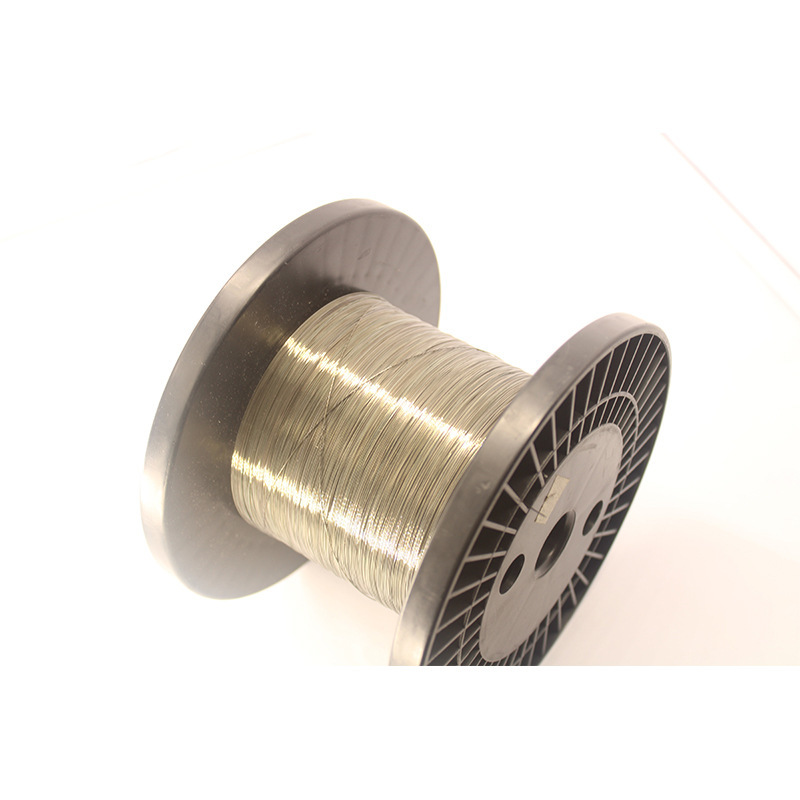Medical guide wire: a special device for optimizing medical processes
2023-07-19 15:41
In the medical field, medical guidewire is an important medical device, which is widely used in the diagnosis and treatment of various diseases. Medical guidewire is a slender catheter, usually made of stainless steel, titanium alloy and other materials, used to guide other medical devices such as catheters, stents, drugs, etc. into the human body to achieve the purpose of treating diseases or relieving symptoms. This article will detail the types, applications, and importance of medical guidewires in optimizing medical processes.

According to different characteristics and application ranges, medical guide wires can be divided into the following types: Hardness guide wire:
Hardness guide wire is a common type of medical guide wire, with high hardness and strength. They are commonly used to guide other medical devices to target locations inside the human body through curved blood vessels and narrow orifices.
Soft guide wire: soft guide wire is relatively soft and has good flexibility. This guidewire is commonly used to pass through soft tissues and narrow orifices, such as coronary arteries, neurovascular, etc.
Superslip Guidewire: Ultra-slippery guidewire has a low coefficient of friction and can easily pass through other medical devices and human tissues. This guidewire is often used in complex human orifices such as coronary arteries and neurovascular vessels.
Balloon guidewire: A balloon guidewire is a special medical guidewire that has an inflatable balloon attached to its end. By inflating and defining, the balloon can expand and contract to pass through a narrowed orifice or dilate a narrowed blood vessel.
Drug-coated guidewire: Drug-coated guidewire is a special guidewire coated with drugs on the surface, which can release drugs in the process of guiding other medical devices to achieve the purpose of local treatment.
Second, the application range of medical guidewire Medical guidewire plays an important role in the diagnosis and treatment of various diseases, and the following is its main application range
:
Cardiovascular diseases: Medical guidewires are often used in the diagnosis and treatment of cardiovascular diseases. For example, in coronary angiography, doctors guide a catheter through a medical guidewire to the coronary artery, injecting contrast agent to show that the blood vessels are narrowed or blocked. In addition, medical guidewires can also be used to place heart stents, perform cardiac interventional procedures, etc.
Cerebrovascular diseases: Medical guidewires also play an important role in the diagnosis and treatment of cerebrovascular diseases. Doctors can guide catheters to brain blood vessels through medical guidewires, perform cerebral angiography, place brain stents, and other operations.
Peripheral vascular disease: Medical guidewires can be used for the diagnosis and treatment of peripheral vascular diseases. For example, in lower extremity arteriography, doctors guide a catheter through a medical guidewire to the lower extremity artery and inject contrast agent to check for narrowed or blocked blood vessels. In addition, medical guidewires can also be used to place vascular stents, perform interventional procedures, and other operations.
Respiratory diseases: Medical guidewires are also widely used in the diagnosis and treatment of respiratory diseases. For example, in bronchoscopy, doctors guide bronchoscopes to the lungs through medical guidewires to check the health of the respiratory tract and take pathological samples. In addition, medical guidewires can also be used for pulmonary angiography, placement of pulmonary stents, etc.
Digestive diseases: Medical guidewires also play an important role in the diagnosis and treatment of digestive diseases. For example, in a gastrointestinal endoscopy, a doctor guides a gastrointestinal scope through a medical guidewire to the stomach or intestines to check the health of the digestive system and take pathological samples. In addition, medical guidewires can also be used for bile duct stent placement, hepatic artery embolization, etc.
In short, as a key medical device, medical guidewire plays an important role in the diagnosis and treatment of various diseases. With the continuous development and innovation of medical technology, the application scope of medical guidewire will continue to expand to provide patients with more effective treatment methods.
Previous Page:
Related News
Contact Us
Telephone:86-0755-84264858
Mobile:13823613867 13418804292
Fax: 0755-84263124
Address: No. 22-1 Youganyuan Road, Anliang Community, Yuanshan Street, Longgang District, Shenzhen






